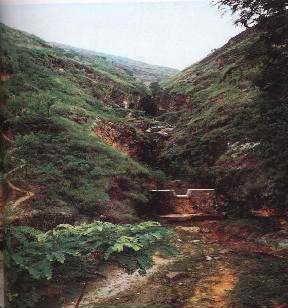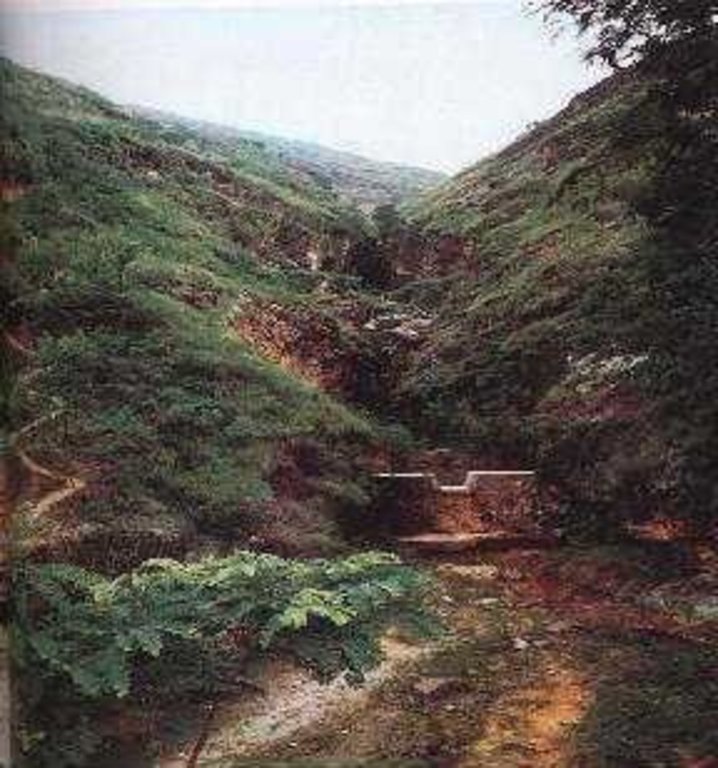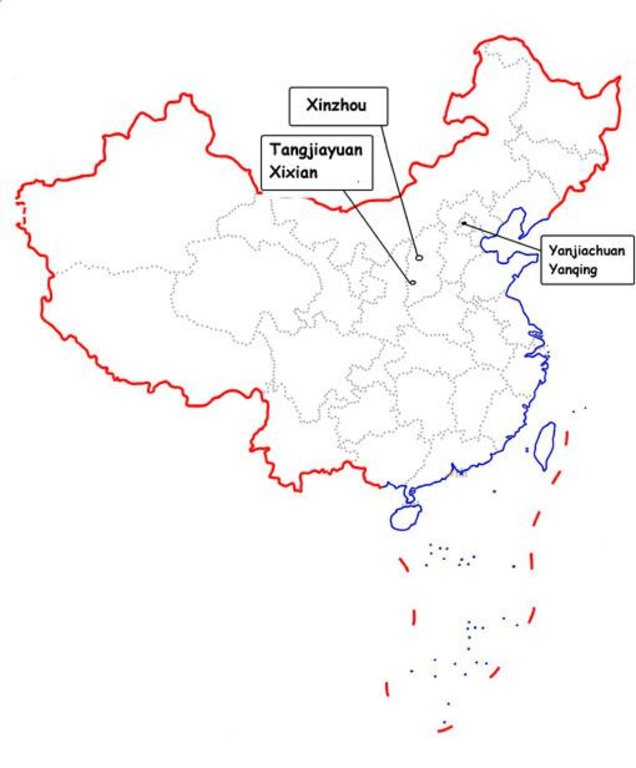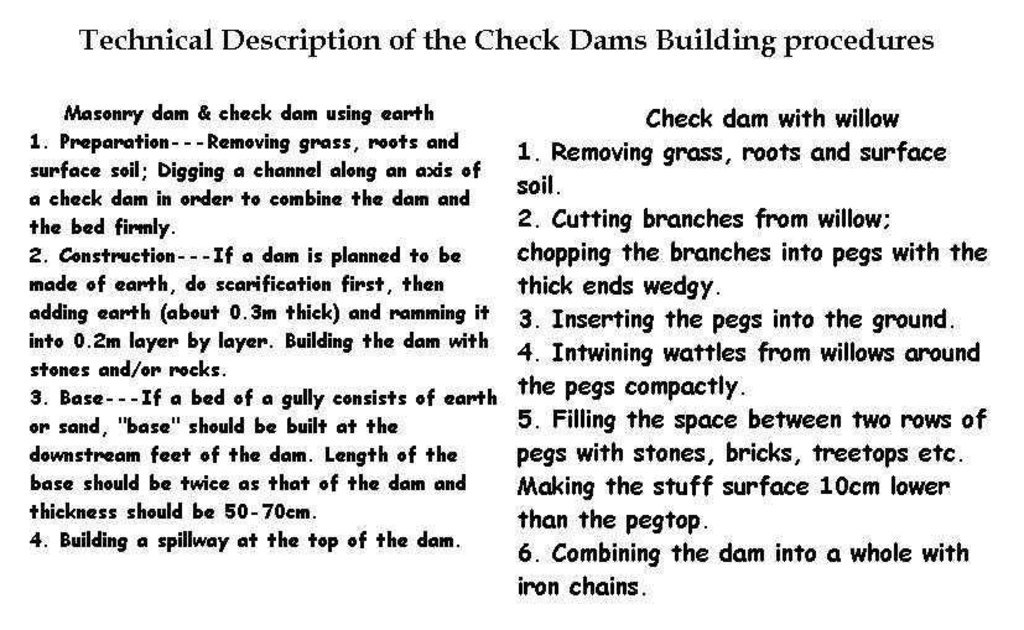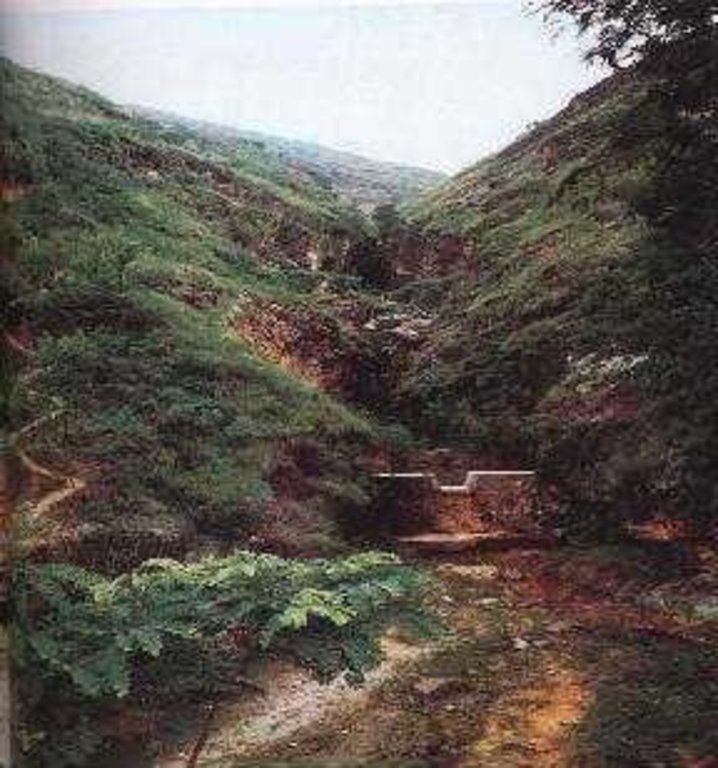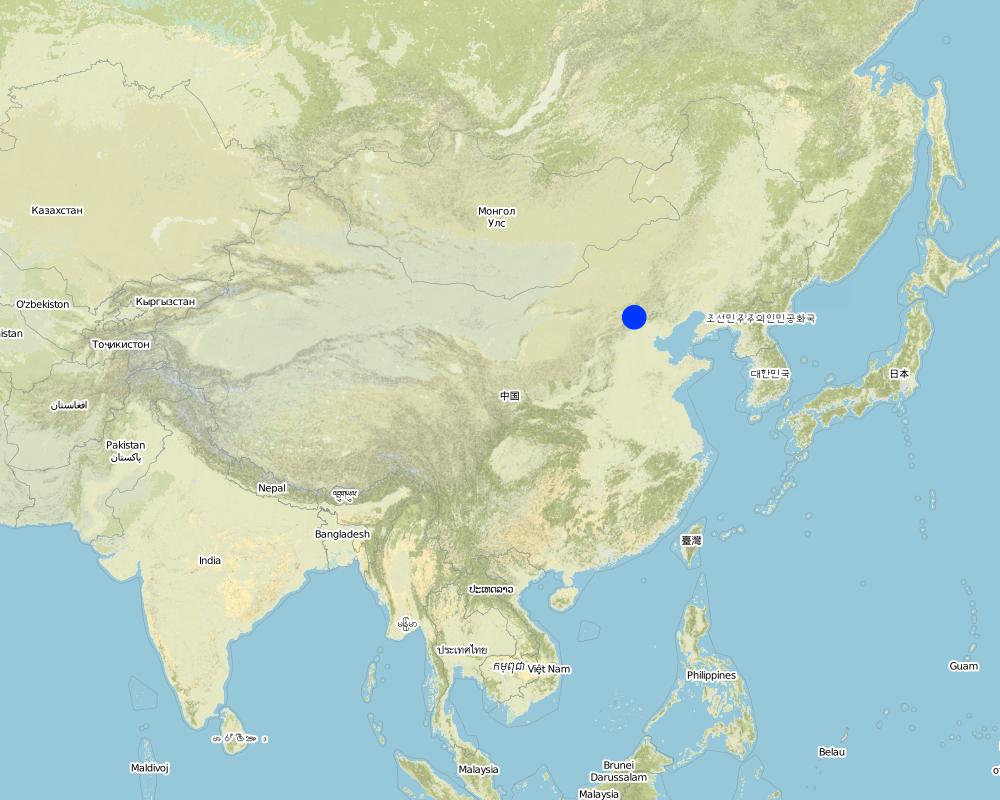Check Dam [Китай]
- Создание:
- Обновить:
- Составитель: Haiyan WEI
- Редактор: –
- Рецензент: David Streiff
approaches_2397 - Китай
Просмотреть разделы
Развернуть все Свернуть все1. Общая информация
1.2 Контактные данные специалистов и организаций, участвующих в описании и оценке Подхода
Специалист по УЗП:
Название организации (-ий), содействовавших документированию/оценке Подхода (если применимо)
Department of Resources and Environmental Science, Beijing Normal University (Department of Resources and Environmental Science, Beijing Normal University) - Китай1.3 Условия, регламентирующие использование собранных ВОКАТ данных
Составитель и ответственный/-ые специалист(-ы) согласны с условиями, регламентирующими использование собранных ВОКАТ данных:
Да
1.4 Ссылка (-и) на Анкету (-ы) по Технологиям УЗП
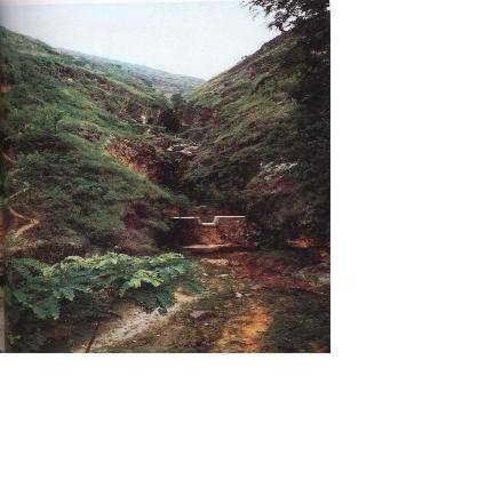
Check Dam [Китай]
Check dam refers to dam that constructed in the gullies or river ways and the height of the dam is often lower than 5m.
- Составитель: Haiyan WEI
2. Описание Подхода УЗП
2.1 Краткое описание Подхода
Check dam is a kind of sediment storage dam of 5m below and is built in channels to control the down cutting of channel bed.
2.2 Подробное описание Подхода
Подробное описание Подхода:
Aims / objectives: Xifeng county is one of the key areas of soil erosion control in China. In order to reduce the local soil erosion, and also to bring certain economic benefits to local residents, the Ministry of Water Resources is in charge of check dam construction activities.
Check dam is widely used in controlling soil erosion. The training is a main approach to promotion of the check dam technology. It is necessary to mobilize local people to participate in construction, while providing to them some cash subsidies. In such a way local people can get economic benefits, and strengthen their awareness and
knowledge of soil and water conservation.
Methods: Main objectives: (1) Elevating erosion basis of channel bed to prevent the channel down cutting and channel bank expansion, and decrease channel gradient. (2) Storing silt and reducing the amount of sediment, transported into the rivers. (3) Decreasing channel flow rates and reducing the flood risk of the lower reaches. (4) Debris flow control by use of strong permanent check dams. (5) Making channel silted to form sediment-covered terraces for future use.
Stages of implementation: Implemetation procedure: (1) site selection and design; (2) material preparation, labor recruitment and temporary road buliding; (3) main project construction.
Other important information: The construction cost of check dam is determined by project quality requirements, difficulty of construction, work size, construction technology, and some other factors. Regional factors have also an important impact. Therefore, the investment is mainly made by government with local supporting funds. Check dam construction is often
associated with plant cultivation, aquaculture design and other measures to make comprehensive use of sediment retention and water storage. It can increase agricultural productivity and farmers’ income in addition to improve local environment.
2.3 Фотографии, иллюстрирующие Подход
2.5 Страна/ регион/ место, где применялся Подход
Страна:
Китай
Административная единица (Район/Область):
Shanxi, Beijing
Более точная привязка места:
Xifeng
Map
×2.6 Даты начала и окончания реализации Подхода
Год начала реализации:
1960
2.7 Тип Подхода
- традиционная/ местная система землепользования, используемая коренным населением
2.8 Каковы цели/ задачи Подхода
The Approach focused on SLM only
1) Fixation and raise of erosion basis, preventing down cutting of channel and channel bank expansion. 2) Making channel silted to form sediment-covered terraces for farming. 3) Decreasing channel gradient and flow rates and reducing the flood risk of the lower reaches.
The SLM Approach addressed the following problems: 1) Serious debris flow which causes tremendous economic loss and threats to the residents safety. 2) Serious soil erosion, especially down cutting and expansion of gully. 3) Poor local economy, lack of funds and technology for soil erosion control.
2.9 Условия содействующие применению Технологии/ Технологий в рамках Подхода или затрудняющие его
Социальные/ культурные/ религиозные нормы и ценности
- затрудняют
Unawareness of soil and conservation knowledge.
Treatment through the SLM Approach: Strengthening education and training.
Наличие/ доступность финансовых ресурсов и услуг
- затрудняют
More investment needed for mortar stone check dam.
Treatment through the SLM Approach: Government and company investment to develop eco-industry.
Нормативно-правовая база (землевладение, права на земле- и водопользование)
- затрудняют
The existing land ownership, land use rights / water rights hindered a little the approach implementation The state has ownership of the land resources, land users can only lease the land for a period of time, they worry about their land would be transferred to others.
Осведомленность в области УЗП, доступность технической поддержки
- затрудняют
Check dam design and construction need qualified technicians.
Treatment through the SLM Approach: Professionals and training.
3. Участие и распределение ролей заинтересованных сторон
3.1 Заинтересованные стороны, участвующие в реализации Подхода и их роли
- местные землепользователи/ местные сообщества
Working land users were mainly men (In 1960s and 1970s, the SWC activities mainly distributed and administrated to farmers to do in leisure time(winter), and grouped to build check dams, terraces, etc
Existing groups of land users;
Those who live in gully areas and have less flat crop land provide their advices and requirement to the government and decision makers.
- государственные власти (отвечающие за планирование или принятие решений)
3.2 Участие местных землепользователей/ местных сообществ на разных стадиях реализации Подхода
| Участие местных землепользователей/ местных сообществ | Перечислите участников и опишите их вовлеченность | |
|---|---|---|
| инициирование/ мотивация | внешняя поддержка | Mainly:public meetings; partly: workshops/seminars; Series of site meetings to explain the SWC to the land users. |
| планирование | внешняя поддержка | Mainly: public meetings; partly: workshops/seminars |
| выполнение | интерактивное | casual labour |
| мониторинг/ оценка | интерактивное | Mainly: interviews/questionnaires; partly: reporting; |
| Research | самоорганизация | on-station |
3.4 Принятие решений по выбору Технологии/ Технологий УЗП
Укажите, кто принимал решение по выбору применяемой Технологии/ Технологий:
- политики/ руководители
Поясните:
consultative.
Decisions on the method of implementing the SLM Technology were made by by politicians / leaders. directive (top-down).
4. Техническая поддержка, повышение компетенций и управление знаниями
4.1 Повышение компетенций/ обучение
Проводилось ли обучение землепользователей/ других заинтересованных лиц?
Да
Укажите, кто проходил обучение:
- землепользователи
- extensionists/trainers, politicians/decision makers
Тип обучения:
- обмен опытом между фермерами
- общие собрания
- курсы
Рассматриваемые темы:
The approach provide the training about the technology, such as check dam dimension and materials etc.
4.2 Консультационные услуги
Есть ли у землепользователей возможность получать консультации?
Да
Укажите, где именно оказываются консультационные услуги:
- на полях землепользователей
Описание/ комментарий:
The Basic Farmland Construction; Key elements: Government plan, design, distribute, Farmers implement; 1) Advisory service was carried out through: government's existing extension system 2) Advisory service was carried out through: government's existing extension system; Extension staff: mainly government employees 3) Target groups for extension: land users; Activities: Field visit and demonstration
Advisory service is quite adequate to ensure the continuation of land conservation activities; At each government level, there is a SWC division which is in charge of SWC activities including extension.
4.3 Институциональная (организационная) поддержка
В ходе реализации Подхода были ли организованы новые институциональные структуры или поддержаны уже существующие?
- да, умеренно
Укажите уровень, на котором структуры были укреплены или вновь созданы:
- местные
Укажите тип поддержки:
- финансовая
- повышение компетенций/ обучение
4.4 Мониторинг и оценка
Являются ли мониторинг и оценка частью Подхода?
Да
Комментарии:
bio-physical aspects were ad hoc monitored by 0 through observations; indicators: debris flow frequency,speed,volume, time and damage
technical aspects were ad hoc monitored by 0 through observations; indicators: damage degree
socio-cultural aspects were ad hoc monitored by 0 through measurements; indicators: accredited attitude for debris flow control and part icipation in check dam building.
economic / production aspects were ad hoc monitored by 0 through observations; indicators: control area
area treated aspects were ad hoc monitored by 0 through measurements; indicators: science and rationality of Management
no. of land users involved aspects were ad hoc monitored by 0 through observations; indicators: None
management of Approach aspects were regular monitored by 0 through measurements; indicators: None
There were several changes in the Approach as a result of monitoring and evaluation: Improving the construction method so as to make the check dams much durable.
4.5 Научные исследования
Были ли научные исследования частью Подхода?
Да
Укажите темы исследований:
- экономика / маркетинг
- экология
- технология
Напишите подробнее и назовите тех, кто выполнял исследования:
Manual and criteria for standardization design and construction.
Research was carried out both on station and on-farm
5. Финансирование и внешняя материальная поддержка
5.1 Годовой бюджет мероприятий по УЗП в рамках Подхода
Если точный годовой бюжет неизвестен, укажите примерный диапазон затрат:
- 100 000-1 000 000
Комментарий (например, основные источники финансирования/ ключевые доноры):
Approach costs were met by the following donors: government (national): 90.0%; local community / land user(s) (-): 10.0%
5.2 Финансирование и внешняя материальная поддержка, предоставляемая землепользователям
Предоставлялась ли землепользователям финансовая/ материальная поддержка для применения Технологии /Технологий?
Да
5.3 Субсидии на отдельные затраты (включая оплату труда)
- оборудование
| Укажите, какие ресурсы были субсидированы | В какой степени | Опишите субсидии подробнее |
|---|---|---|
| техника | профинансированы полностью | |
Если труд землепользователя был существенным вкладом, укажите, был ли этот вклад:
- за денежное вознаграждение
Комментарии:
Before 1970s, the SWC activities were obligation, but after that some subsidies were provided by government.
Labour can also be voluntarely or rewarded with other material support
5.4 Кредитование
Предоставлялись ли в рамках Подхода кредиты на мероприятия УЗП?
Да
Укажите условия предоставления (процент, окупаемость и т.д.):
Interest rate charged: 2.0%
Interest was lower than market rate.
6. Анализ влияния и заключительные положения
6.1 Влияние Подхода
Сумел ли Подход помочь землепользователям внедрить и поддерживать технологии УЗП?
- Нет
- Да, немного
- Да, умеренно
- Да, существенно
Harvesting runoff in the rainy season and making 'deposited flat land'.
Сумел ли Подход разрешить правовые проблемы землевладения/ землепользования, препятствующие использованию технологий УЗП?
- Нет
- Да, немного
- Да, умеренно
- Да, существенно
The SWC activities were organized to implement by local communities which can properly deal with the relationship. The problem is likely to be overcome in the near future. The SWC applied area can be contracted for a long time between land ownership and users.
Did other land users / projects adopt the Approach?
- Нет
- Да, немного
- Да, умеренно
- Да, существенно
The method will help to control debris flow; the check dam is widely used
6.3 Долгосрочная устойчивость мероприятий в рамках Подхода
Могут ли землепользователи самостоятельно (без внешней поддержки) продолжать применение того, что было реализовано в рамках Подхода?
- да
6.4 Сильные стороны/ преимущества Подхода
| Сильные стороны/ преимущества/ возможности по мнению землепользователей |
|---|
| Mitigating damage caused by debris flow and floods (How to sustain/ enhance this strength: Making planning and design on watershed management) |
| Сильные стороны/ преимущества/ возможности по мнению составителя или других ключевых специалистов |
|---|
| Erosion control to decrease sediment (How to sustain/ enhance this strength: Check dams building.) |
| More effective use of rainfall resources (How to sustain/ enhance this strength: Develop compound management with cultivation and aquaculture.) |
| Increasing farmer’s income (How to sustain/ enhance this strength: Completing irrigation facility and establishing economic forest) |
6.5 Слабые стороны/ недостатки Подхода и пути их преодоления
| Слабые стороны/ недостатки/ риски по мнению землепользователей | Возможные пути их преодоления/снижения? |
|---|---|
| After abolition of the compulsory labor and accumulative labor service, the enthusiasm and willingness of farmers to participation is lowered | Some measures shoule be taken by government at all levels to stimulte and encourage farmers to participate in the construction work |
| Слабые стороны/ недостатки/ риски по мнению составителя или ответственных специалистов | Возможные пути их преодоления/снижения? |
|---|---|
| Large investment. | Multi-level investment system, which includes national investment with local support, labor input by farmers, and use of foreign and social funds. |
7. Справочные материалы и ссылки
7.1 Методы сбора/источники информации
- данные, собранные из отчетов и достоверных документов
7.2 Ссылки на опубликованные материалы
Название, автор, год публикации, ISBN:
Special Planning of Soil and Water Conservation in Xinzhou Region , Shanxi Province (1986-2000)
Где опубликовано? Стоимость?
Library of the Resource and Environmental Department of the Beijing Normal Univ.
Название, автор, год публикации, ISBN:
The application of the Check dam with willow in controlling gully erosion.Tu xingwen. Soil and water conservation in China, 1986.
Где опубликовано? Стоимость?
Library of the Resource and Environmental Department of the Beijing Normal Univ.
Название, автор, год публикации, ISBN:
How to design the dry masonry dam in the Hanjiachuan watershed. Tianyuzhu, Wangzuliang. Beijing. Water conservation in Beijing, 2000.3
Где опубликовано? Стоимость?
Library of the Resource and Environmental Department of the Beijing Normal Univ.
Название, автор, год публикации, ISBN:
Consideration about the check dam design and application. Liu shunzong. Soil and water conservation in China, 1990.6
Где опубликовано? Стоимость?
Library of the Resource and Environmental Department of the Beijing Normal Univ.
Ссылки и модули
Развернуть все Свернуть всеСсылки

Check Dam [Китай]
Check dam refers to dam that constructed in the gullies or river ways and the height of the dam is often lower than 5m.
- Составитель: Haiyan WEI
Модули
Нет модулей


